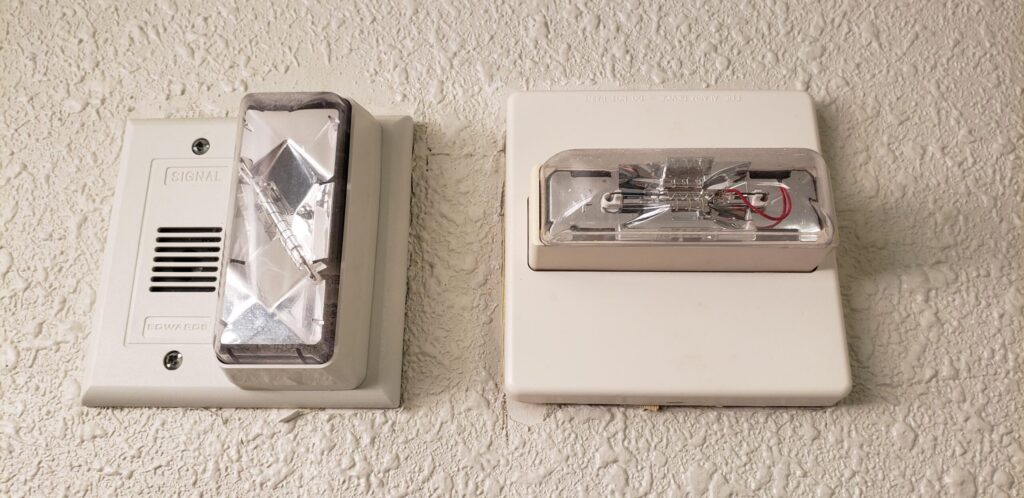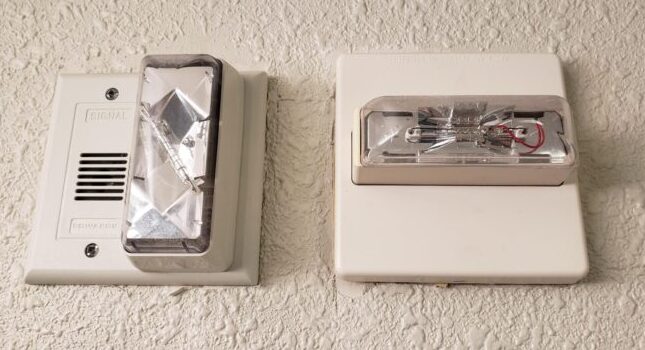What to know about NFPA 72, which defines notification systems
NFPA 72-2022 outlines design and installation requirements for fire signaling and alarms
NFPA 72 insights
- This section of the webcast transcript explains the model building code requirements that govern notification systems, and design and installation criteria of NFPA 72: National Fire Alarm and Signaling Code.
- The first portion of this transcript explores various drivers for fire alarm systems, including building and fire codes, occupancy classifications, suppression systems, emergency control functions and emergency communication systems, detailing specific requirements for different occupancies and situations.
NFPA 72: National Fire Alarm and Signaling Code provides design and installation provisions for fire signaling, emergency communication and mass notification systems. These systems are used not only to notify occupants of fire emergencies, but also cover emergencies such as weather events, terrorist events and other threats.
Read the transcript of this webcast, and watch the on-demand event here. This transcript has been edited for length and clarity.
Details are provided by Chris Campbell, PE, Principal & Founder, Campbell Code Consulting, Elkridge, Maryland.
We’re going to be talking about the drivers for fire alarm systems, specifically identifying when a fire alarm system is required in a facility. Now when you think about fire alarms, probably the first code or standard that comes to mind is NFPA 72: National Fire Alarm and Signaling Code.
If you open up NFPA 72 and go to Chapter 1 in the scoping language, you will read that NFPA 72 covers the application, installation, location, performance, inspection, and testing and maintenance of fire alarm and emergency communication systems. You will notice that nowhere in that scope is there anything about when a fire alarm system is required. The reason for that is that NFPA 72 does not require a fire alarm system to be installed at any building or facility.
Rather, when an applicable building or fire code or other standard requires a fire alarm system, NFPA 72 tells you how to do it.
There is some very clear language in Chapter 1 of NFPA 72 that supports this, which says that the code shall not be interpreted to require a level of protection that is greater than which would otherwise be required by the applicable building or fire code. What is the applicable building or fire code? Well, that’s going to depend on your jurisdiction, but in general in the United States, the International Building Code (IBC) is applied and adopted in every state.
Many states also adopt the International Fire Code and then there are some states that do adopt NFPA 1: Fire Code and NFPA 101: Life Safety Code. Outside of these building and fire codes, you may have a facility where there is an occupancy specific standard that applies and could be a driver for a fire alarm system.
For example, if your facility enforces NFPA 75: Standard for the Fire Protection of Information Technology Equipment that could be a driver for providing a fire alarm system in your building.
If your facility has a special hazard suppression system, so for example, a gaseous suppression or maybe a deluge suppression system that could be a driver to provide a fire alarm system because the fire alarm system is going to be the method of detection and initiation of those types of suppression systems. If you are working on a project where the owner of the project or the insurer has some specific requirements or criteria that could be a potential driver for the provision of a fire alarm system.
Then perhaps most importantly are local amendments. The codes and standards described are published at a national level and then they are adopted and typically amended at either the state or local level, so you always want to make sure to verify if there are any local amendments that are applicable to your project that could require a fire alarm system.
We are going to focus in for right now on the requirements that are coming out of the building and fire codes. These codes require fire alarm systems for a variety of functions. That could be detection, notification, it could be supervision of equipment, emergency communication systems, emergency control functions, or it could be a combination of multiple of those functions.

Occupant notification can be achieved in many ways. Courtesy: Amara Rozgus, CFE Media and Technology
We will start out with suppression systems. If your building has an automatic sprinkler system, most likely it is going to require a fire alarm system for the purposes of supervision of that sprinkler system. There certainly are some exceptions. For example, a limited area sprinkler system or perhaps if you are working on a one- or two-family dwelling where maybe a fire alarm system is not required, but in general, most sprinkler systems are going to require fire alarm supervision. It is important to note that fire alarm supervision is separate from occupant notification, so it could be that your system requires fire alarm for the purposes of supervision of the sprinkler equipment, but it does not necessarily require occupant notification.
NFPA 72 occupancy-driven requirements
Next, we are going to move into the occupancy-driven requirements. The IBC requires that all buildings are classified as one or more occupancy classifications. Depending on the occupancy that is present in your facility, there may be a requirement for a fire alarm system. If your building has an assembly occupancy, once there are more than 300 people in your assembly occupancy, a manual fire alarm system is going to be required. Then once you get over 1,000 people, the requirement for a voice fire alarm system comes in.
If you have a business occupancy in your facility, the requirement is based on the occupant load as well as the location within the building where that business occupancy is located. Then as we move through the various occupancy classifications, there’s somewhat similar requirements.
For example, group F, factory and industrial occupancies, is like business and that is based on the number of occupants and the location in the building. If you have a group E, educational occupancy, typically that is going to require a voice fire alarm system with some exceptions for smaller group E facilities.
Moving on, if you have a group H, high-hazard occupancy, those are typically going to require fire alarm system as well as some other types of detection and alarm systems, depending on the specific hazards that are present. Group I, institutional occupancies, are going to require fire alarm system in almost all cases. That is one example where private mode signaling is going to be permitted, which we are going to get to a little bit later in the conversation.
Finally, in the occupancy classification drivers, we have residential occupancies, and this would include both transient and nontransient occupancies. Most residential occupancies are going to require a fire alarm system with some exceptions for smaller residential facilities, and it is important to note that both transient and nontransient residential occupancies have requirements for either smoke alarms or smoke detection.
If you have a high-rise building, there is going to be a requirement for a voice fire alarm system just because it is a high-rise building. Separately, there is a requirement for some form of first responder or firefighter communication system in the building. Typically, that is going to be provided as a two-way radio enhancement system, but some jurisdictions do specifically allow a two-way hardwired firefighter phone system, but again that would need to be specifically approved by the authority having jurisdiction (AHJ).
Next up we have emergency control functions. There are certain functions that may be present in your building that would require some sort of interface with a fire alarm system. For example, if your building has a smoke control system, the smoke control system detection is required to be connected to the fire alarm system and the control panel that is running that smoke control system would be required to be UL 864 listed for smoke control, also known as a UUKL listing. Separately, if there is a fire alarm system in your building and you have duct smoke detectors for the purposes of shutdown of a heating, ventilation and air conditioning (HVAC) system, those duct smoke detectors for example are required to be connected to the fire alarm system.
Finally, for drivers, we have emergency communication systems (ECS). We have already talked about one example of ECS, which is a voice fire alarm system, which is required in high-rise buildings as well as group A and group E occupancies. Outside of that, if a building contains an area of refuge, there is a requirement for a two-way communication system in that area of refuge. That would be an example of an ECS.
Similarly, if a building contains elevators, there is typically a requirement for a two-way communication system at that elevator landing. In summary, there are a wide variety of drivers from the building and fire codes that could potentially require a fire alarm system for a facility. It is important to remember that there are many different functions that a fire alarm system serves. Detection, notification, emergency controls, many that we have just discussed, and one or more of those different fire alarm functions could apply to a building.
Do you have experience and expertise with the topics mentioned in this content? You should consider contributing to our CFE Media editorial team and getting the recognition you and your company deserve. Click here to start this process.

